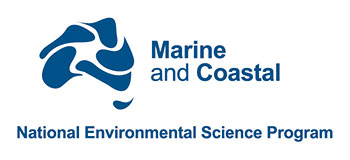North Australian Indigenous Land and Sea Management Alliance Ltd (NAILSMA)
Type of resources
Topics
Keywords
Contact for the resource
Provided by
Years
status
-

This record provides an overview of the NESP Marine and Coastal Hub small-scale study - Project 3.9 - Establishing an Indigenous led approach to coordinated vertebrate pest management in northern Australia. For specific data outputs from this project, please see child records associated with this metadata. Wild livestock (particularly pigs, buffalo and cattle) are one of the primary threats to coastal ecosystem values in northern Australia. Wild livestock poses significant threats to cultural and livelihood values on Indigenous managed and owned lands and impact threatened species, water quality and other elements of biodiversity. Recent research has highlighted the importance of feral animal impacts on coastal wetlands and ecosystems that have implications for greenhouse gas accounts and other important national environmental assets such as mangrove restoration, coral reefs, marine turtle nesting and wetlands values. Research is being done on feral animal impacts on several prominent and important values including carbon stocks, marine turtle depredation and sediment loads impacting coral reefs and seagrass. This research has direct relevance to regulated and voluntary carbon and biodiversity markets. The development of new carbon abatement and sequestration methodologies and associated biodiversity protection markets could lead to economic opportunities for Indigenous owned and managed assets in northern Australia. However, in the absence of Indigenous leadership in the research that underpins method development, there is a risk that the potential economic and social benefits of these new methods won’t be realised, will erode Indigenous rights and limit local participation in long term management and monitoring of threats. This project will support the development of Indigenous led methods for feral animal management with the aim of establishing methods that account for the values and cultural boundaries that underpin activities on the Indigenous estate. We will do this research in partnership with Indigenous organisations that have long term feral animal management programs, developed with Traditional Owners and operating within the cultural and environmental boundaries of the homelands they manage. Planned Outputs • Map Indigenous land management tenure across northern Australia [spatial dataset] • Final technical report with analysed data and a short summary of recommendations for policy makers of key findings [written] • Research Paper [written]
-

This record provides an overview of the NESP Marine and Coastal Hub small-scale study - Project 3.2 - Developing a National Indigenous Environmental Research Network – Marine and Coastal research case studies. For specific data outputs from this project, please see child records associated with this metadata. The proposed National Indigenous Environmental Research Network (NIERN) is an Indigenous-led strategic initiative to establish a community of practice that supports current environmental research needs and priorities, enhance future research agendas, mobilise investment opportunities, bolster the impact and durability of research outcomes and empower Indigenous Australians to participate in the national environmental scientific research agenda. This project will experiment with conceptual models for establishing a working NIERN to provide evidence that will guide Indigenous organisations, policy makers and researchers that aim to support Indigenous leadership and participation in environmental research. The NESP 2020 review reported that “Indigenous peoples seek earlier involvement in land and sea country research. This means being formally included in the project design, development and delivery.” The project team will work with Indigenous organisations, government agencies and researchers across Australia to provide a national perspective of current processes used to establish new research priorities and projects and use case studies to explore how Indigenous led approaches could augment these projects through Indigenous participation at all project stages. Planned Outputs • Mapping dataset [spatial dataset] • Final technical report with analysed data and a short summary of recommendations for policy makers of key findings [written]
 eAtlas Data Catalogue
eAtlas Data Catalogue